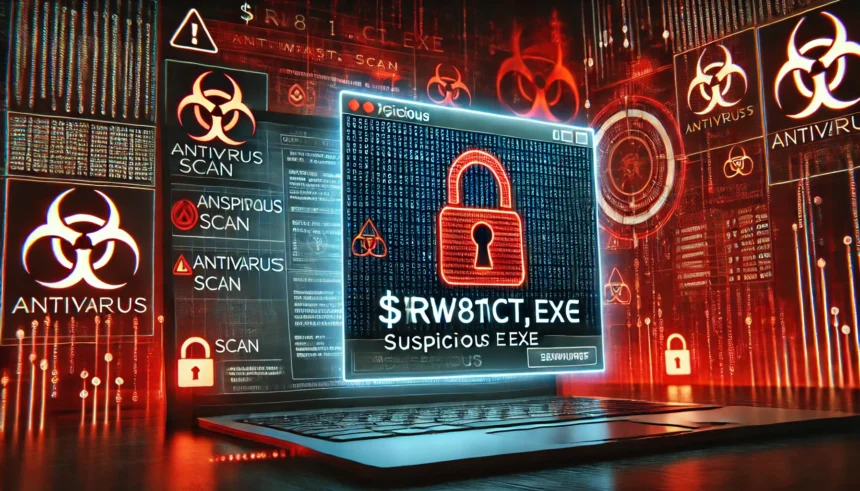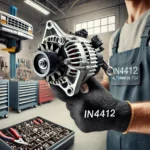H2: Introduction to $rw8t1ct.exe
In the digital age, strange files and unfamiliar processes running in the background of your computer can raise alarms. One such file, “$rw8t1ct.exe,” often triggers suspicion due to its obscure name and potential to hide harmful behavior. This guide aims to demystify $rw8t1ct.exe, explain its nature, potential risks, and offer practical steps to detect and remove it safely.
H2: What is an EXE File?
Executable files, commonly known by their “.exe” extension, are core components of software on Windows systems. These files contain instructions for your computer to execute tasks and run applications. While most .exe files are safe and essential, some can be disguised malware or unauthorized programs.
H3: Safe vs Suspicious EXE Files
Legitimate EXE files typically reside in secure folders like:
- C:\Program Files\
- C:\Windows\System32\
However, suspicious EXE files often appear in temporary folders or user directories, sometimes with random or obscure names like $rw8t1ct.exe, indicating potential malware.
H2: Identifying $rw8t1ct.exe on Your System
To determine if $rw8t1ct.exe is harmful or benign, you’ll need to:
- Locate the file – Use Task Manager or File Explorer to search for $rw8t1ct.exe.
- Check file properties – Right-click the file and review the Details tab. Absence of a publisher or odd creation dates may be a red flag.
- Analyze behavior – If the file consumes excessive memory or CPU, or reappears after deletion, it may be malicious.
H2: Is $rw8t1ct.exe a Virus or Malware?
While the name $rw8t1ct.exe doesn’t match any known system processes or commercial software, that alone isn’t confirmation of malware. However, files with randomized names and unknown origin often indicate:
- Trojan downloaders
- Keyloggers
- Backdoors
- Ransomware installers
These types of malware can compromise data privacy, system performance, and network security.
H2: Tools to Detect $rw8t1ct.exe
To ensure you’re protected, use these methods to scan and analyze the file:
H3: 1. Antivirus & Antimalware Software
Trusted programs like Malwarebytes, Microsoft Defender, and Bitdefender can detect and quarantine threats. Always ensure these tools are up to date.
H3: 2. Online File Scanners
Websites like VirusTotal allow you to upload $rw8t1ct.exe and scan it using multiple antivirus engines. This provides a broader analysis.
H3: 3. Static Analysis Tools
Advanced users can use PE analyzers (e.g., PEStudio) or forensic software to inspect the file’s header, strings, and import functions to determine its purpose without executing it.
H2: How to Safely Remove $rw8t1ct.exe
If identified as a threat, follow these steps to safely remove $rw8t1ct.exe:
- Boot into Safe Mode – This prevents the file from running.
- Delete the file manually – Navigate to the location and delete it.
- Scan your entire system – Use antivirus tools to remove residual files or hidden malware.
- Check startup programs – Use Task Manager or Autoruns to ensure $rw8t1ct.exe doesn’t relaunch at startup.
H3: Table: Removal Summary
| Step | Description |
|---|---|
| 1 | Boot in Safe Mode |
| 2 | Locate & delete $rw8t1ct.exe |
| 3 | Perform full antivirus scan |
| 4 | Disable related startup entries |
H2: Prevention Tips for the Future
Keeping your system safe from future infections is just as important as removing current ones. Here are some best practices:
- Install software only from trusted sources
- Avoid downloading cracked or pirated software
- Enable real-time protection in your antivirus
- Keep your operating system and programs updated
- Regularly backup important data
H2: Conclusion
The presence of a file like $rw8t1ct.exe on your system can be a sign of a deeper issue, especially if it shows suspicious behavior or lacks identifying metadata. With the right tools and practices, you can not only detect and remove it safely but also protect your system from similar threats in the future.
H2: FAQs About $rw8t1ct.exe
H3: 1. Can $rw8t1ct.exe be part of a legitimate software?
While uncommon, some internal development tools or lesser-known software might use randomized file names. Always verify using VirusTotal or your antivirus.
H3: 2. Is deleting $rw8t1ct.exe enough to fix the issue?
Not necessarily. The file could regenerate from another hidden component. A full scan and startup cleanup are recommended.
H3: 3. Will removing $rw8t1ct.exe affect system performance?
If the file is malicious, removal will likely improve performance. If it’s legitimate (which is rare), it may disrupt specific software.
H3: 4. How do I know if $rw8t1ct.exe is running in the background?
Open Task Manager, go to the Details tab, and look for $rw8t1ct.exe. You can also use tools like Process Explorer for deeper inspection.
H3: 5. What should I do if $rw8t1ct.exe reappears after deletion?
This could indicate a rootkit or persistent malware. Use advanced tools or consult a cybersecurity expert for deeper cleaning.
Conclusion
Summary: In this guide, we’ve broken down everything you need to know about $rw8t1ct.exe — from understanding its origin, analyzing its threat level, and using the right tools for detection and removal, to implementing preventative security practices. Always treat unknown files with caution and keep your system safeguarded through proactive security habits.
Recommended Articles:
- 1109110-XK216A Air Filter: The Complete Guide to Better Engine Performance
- What is Oncims.net-Linwood? Full Guide to Features, Use Cases, Setup & Benefits
- Dr. T Rama Devi – The Legacy of a Kuchipudi Legend | 91 94922 09490 T Rama Devi
- Embracing the Future of Eye Care with Eye_Rene845
- The Ultimate Guide to Tissariss: Weaving Tradition, Culture, and Innovation






